India is a land of many wonders, and its architectural beauty is one of the most breathtaking. From the ancient forts and palaces to the majestic temples, India’s history has left behind some remarkable landmarks. For those looking to travel to India, exploring its historical architecture should be a top priority. This blog post highlights some of the must-visit historical landmarks in India, taking you on a journey through the country’s rich past and diverse culture. So pack your bags and get ready to discover India’s majestic architecture.
The Taj Mahal, Agra
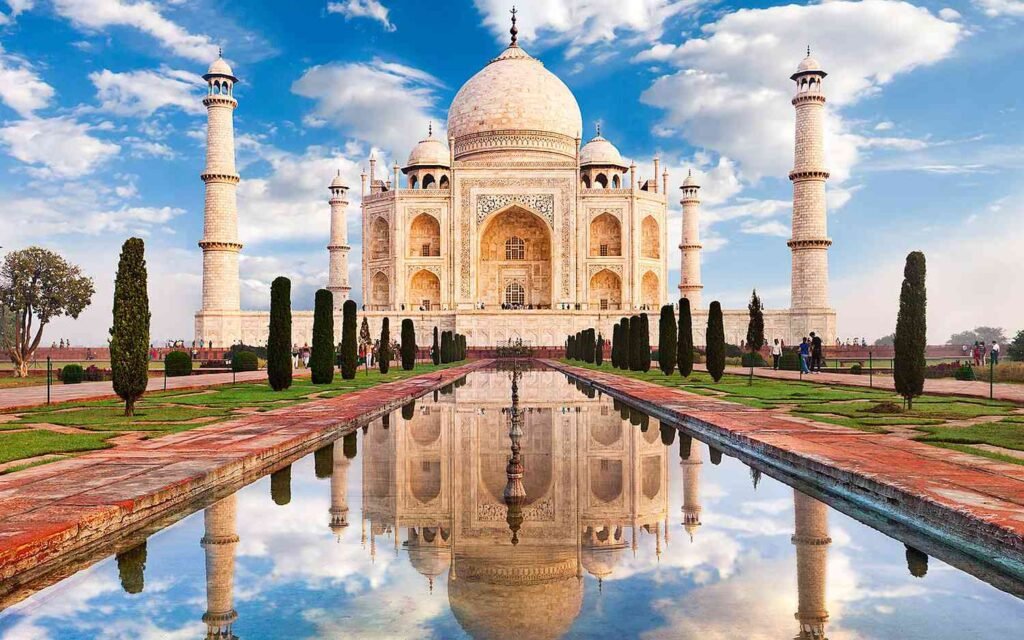
One of the most iconic and beautiful structures in India is the Taj Mahal. This beautiful mausoleum was built by Mughal Emperor Shah Jahan as a tribute to his beloved wife, Mumtaz Mahal. The structure, made entirely of white marble, is a wonder to behold and attracts millions of tourists each year.
The majestic architecture and intricate carvings are awe-inspiring, and the gardens that surround the mausoleum add to its grandeur.
One of the best times to visit the Taj Mahal is during sunrise or sunset when the marble changes color with the light. It’s also less crowded during these times, allowing you to take in the beauty of the place without feeling rushed.
Be sure to add this landmark to your list of places to visit in India, and experience its timeless beauty for yourself.
The Red Fort, Delhi

One of the most iconic landmarks in India, the Red Fort, is a must-visit when traveling to Delhi. Built-in 1638, this massive fort is made of red sandstone and covers a total area of 254.67 acres. The Red Fort served as the residence of the Mughal Emperors until 1857 and became UNESCO World Heritage Site.
The fort has several interesting structures to explore, including the Diwan-i-Am, Diwan-i-Khas, Rang Mahal, and Mumtaz Mahal. Visitors can also watch the daily sound and light show that tells the story of the Mughal Empire and the history of the Red Fort.
Make sure to plan your visit to the Red Fort as it is closed on Mondays and gets very busy on weekends and holidays.
The Qutub Minar, Delhi
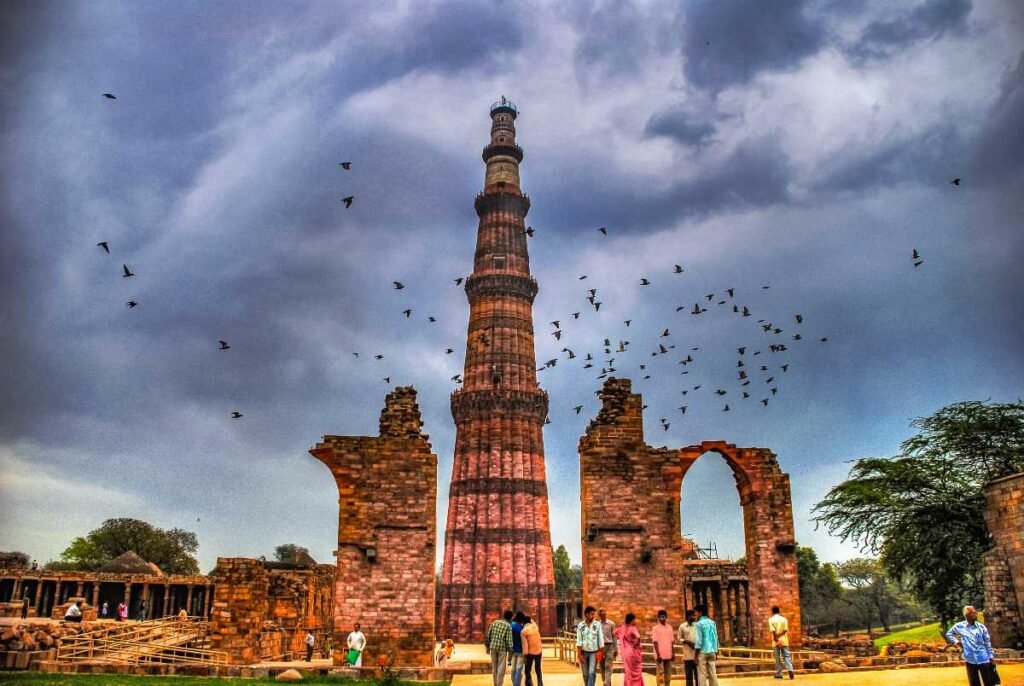
When it comes to visiting places in India, the Qutub Minar in Delhi is worth a visit. This UNESCO World Heritage Site is a towering masterpiece of Mughal architecture and history. Standing at an impressive 72.5 meters, the Qutub Minar is the tallest brick minaret in the world.
Built-in the 12th century by Qutub-ud-din Aibak, the Qutub Minar is a symbol of Islamic rule in India. The tower is famous for red sandstone and marble. It is adorned with intricate carvings and verses from the Quran.
Look closely, and you’ll see carvings of animals, floral patterns, and geometric designs.
One of the highlights of the Qutub Minar complex is the Iron Pillar. Made of iron and standing over seven meters tall, this pillar is a testament to ancient Indian metallurgical skill. The pillar has been standing for over 1,600 years and still shows no sign of rusting or corroding.
The Gateway of India, Mumbai
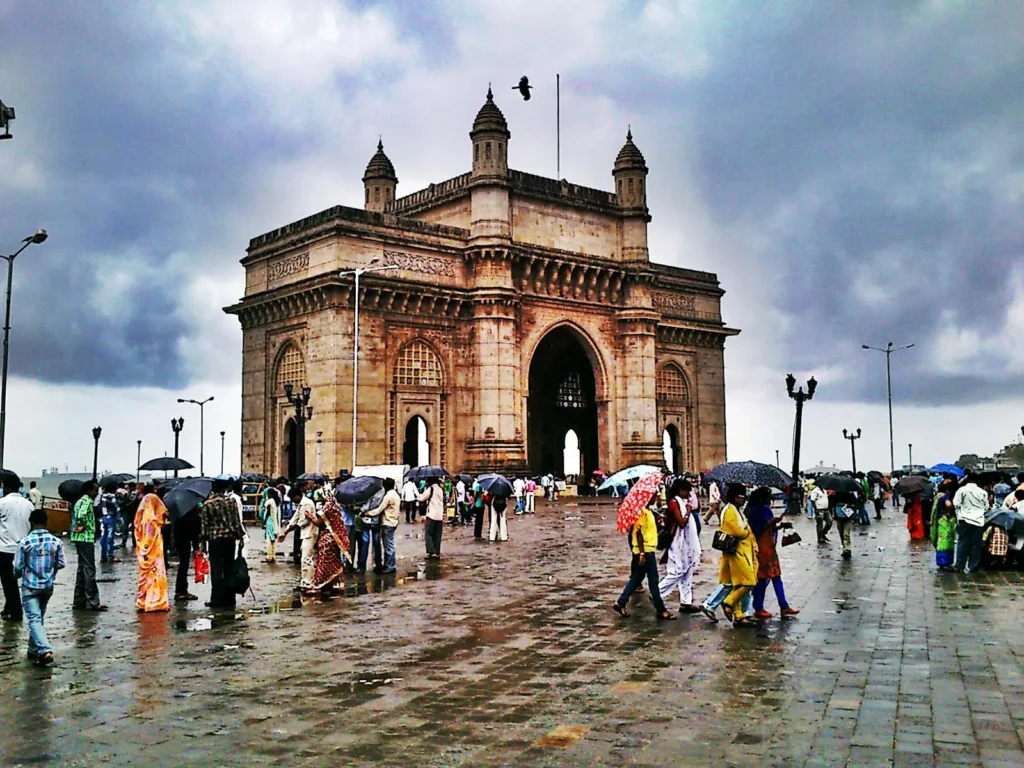
One of the most iconic landmarks in Mumbai is the Gateway of India. Located at the tip of Apollo Bunder in the bustling Colaba district, this imposing arch stands tall and proud, overlooking the Arabian Sea.
Built-in 1924 to commemorate the visit of King George V and Queen Mary, the Gateway of India has since become a popular tourist attraction and a symbol of Mumbai’s colonial past. It has also witnessed several significant historical events, including the departure of British troops after India’s independence in 1947.
If you’re feeling adventurous, you can even take a ferry from the Gateway of India to the nearby Elephanta Caves. It is a UNESCO World Heritage Site that features ancient rock-cut temples and intricate sculptures dating back to the 5th century.
Overall, the Gateway of India is a must-visit on any list of travel places in India.
The Sun Temple, Konark

The Sun Temple in Konark is an absolute must-visit for history buffs and architecture enthusiasts alike. This stunning 13th-century temple was built in honor of the sun god Surya, and it’s known for its incredible architectural beauty.
The temple is shaped like a chariot with twelve massive wheels, and it’s covered in intricate carvings and sculptures. The temple’s wheels cast shadows that indicate the time of day with remarkable accuracy. Also, visitors can watch as the sun moves across the sky and the shadows shift in real-time.
Beyond its architectural beauty and unique design, the Sun Temple is also a testament to the rich cultural and religious heritage of India.
The Mysore Palace, Mysore
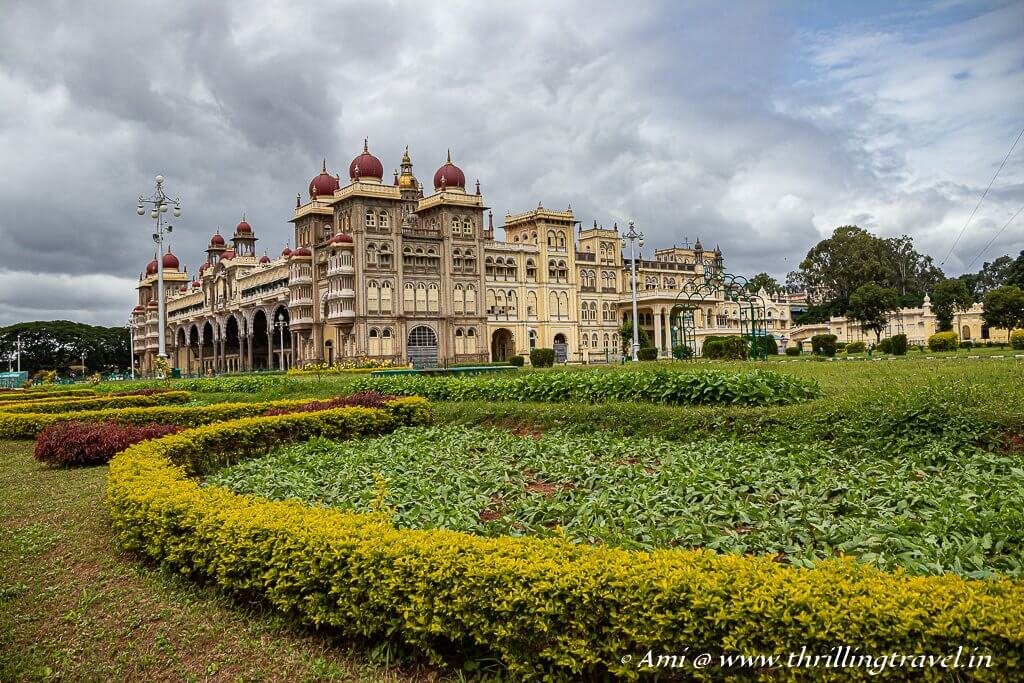
One of the most magnificent royal structures in India is the Mysore Palace located in the city of Mysore in Karnataka. The palace, also known as the Amba Vilas Palace, was built in the 14th century and was expanded and reconstructed over time by various rulers of the Wadiyar dynasty.
The architecture of the Mysore Palace is a blend of Indo-Saracenic, Rajput, and Gothic styles. The palace features intricate carvings, stunning frescoes, and beautiful stained glass windows. The grandeur of the palace is reflected in its durbar hall, which is adorned with beautiful chandeliers and intricately carved ceilings.
Visitors can also explore the private chambers of the palace that feature ornate furnishings and personal belongings of the royal family. The palace grounds also have a beautiful garden and a musical fountain show that is a must-see.
The Mysore Palace is not just a beautiful piece of architecture but also has historical significance. The palace was once the residence of the rulers of Mysore, who played a significant role in shaping the history of Karnataka.
The Meenakshi Temple, Madurai

Another beautiful architectural wonder of India is the Meenakshi Temple. It is located in the city of Madurai. Dedicated to Goddess Meenakshi and Lord Shiva, this temple is a testament to the artistic and architectural skills of the Tamil Nadu region.
The temple’s history can be traced back to the 7th century, when it was first built by Pandyan King Kulasekara.
The temple complex is vast and consists of 14 towering gopurams, or gateways, that are intricately carved and painted with mythological figures and scenes. The tallest of these gopurams stands at an impressive height of 52 meters.
One of the unique features of the temple is its “Hall of Thousand Pillars,” which houses 985 pillars, each intricately carved with unique designs. It’s an architectural marvel that stands out in the world of Indian temples.
The Brihadisvara Temple, Thanjavur

The Brihadisvara Temple in Thanjavur, also known as the Rajarajeswara Temple, is a marvel of Chola architecture. It was built by the Chola emperor Raja Raja I in the 11th century AD. It is a temple of Lord Shiva. The temple stands tall at a height of 216 feet.
One of the most notable features of the Brihadisvara Temple is its massive central dome, also called the vimana.
Inside the temple, there is a huge stone lingam or symbolic representation of Lord Shiva. The walls of the inner sanctum are adorned with elaborate carvings, depicting scenes from Hindu mythology and the lives of the Chola kings. The temple is also home to a large collection of bronze idols, including one of Lord Shiva in his dancing form, known as Nataraja.
Visiting the Brihadisvara Temple is an experience that is both awe-inspiring and humbling. The intricate details of the carvings, the sheer size of the structure, and the history behind it are all a testament to the incredible architectural and engineering skills of the ancient Chola dynasty.
The Ajanta and Ellora Caves, Aurangaba

The Ajanta and Ellora Caves, located in Aurangabad, Maharashtra, are a UNESCO World Heritage Site and a must-visit destination for history buffs and culture lovers. These rock-cut caves date back to the 2nd century BCE and are a marvel of ancient Indian architecture and art.
The Ajanta Caves consist of 30 Buddhist rock-cut caves adorned with exquisite paintings and sculptures depicting various aspects of Buddha’s life. The intricate detailing of the carvings and the vibrant colors of the paintings have withstood the test of time and still leave visitors awestruck.
On the other hand, the Ellora Caves are a combination of Hindu, Buddhist, and Jain rock-cut temples and monasteries. The complex consists of 34 caves with ornate carvings, elaborate pillars, and detailed sculptures. The most famous of these caves is the Kailasa Temple. Also, It is temple of Lord Shiva, which is the largest monolithic structure in the world.
The Khajuraho Temples, Khajuraho
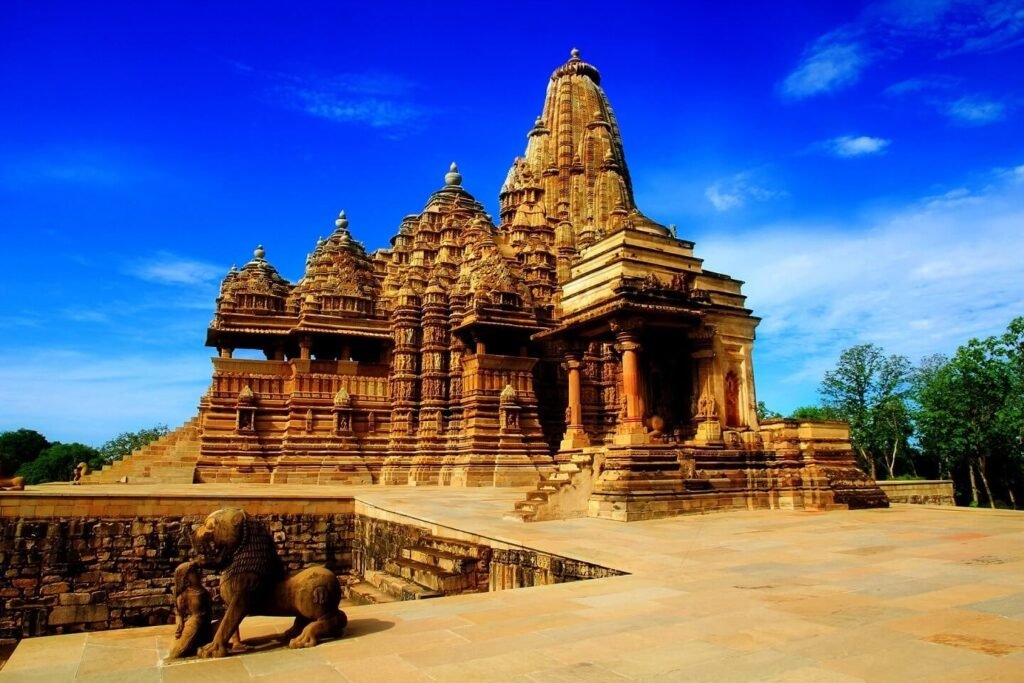
Khajuraho is a small town located in the Indian state of Madhya Pradesh. The town is famous for its stunning temple complex, the Khajuraho Temples. These temples were built between 950 and 1050 AD by the Chandela dynasty. It is famous for its intricate carvings and erotic sculptures.
The Khajuraho Temples consist of a group of 20 temples dedicated to various Hindu deities like Shiva, Vishnu, and Devi. You can see the temple into three zones, the western group, the Eastern group, and the southern group.
The most famous temple in the complex is the Kandariya Mahadeva Temple. This temple is famous for its impressive spire and elaborate carvings of various Hindu deities. The other temples in the complex are also equally impressive and have beautiful carvings and sculptures depicting various mythological stories.
In 1986, the Khajuraho Temples became a UNESCO World Heritage Site. Moreover, This place is now a popular tourist destination in India. The best time to visit the temples is between October and February when the weather is pleasant and there are various cultural programs and events organized in the town.
Overall, the Khajuraho Temples are a stunning example of Indian architecture and a must-visit destination for anyone interested in history, culture, and art.













